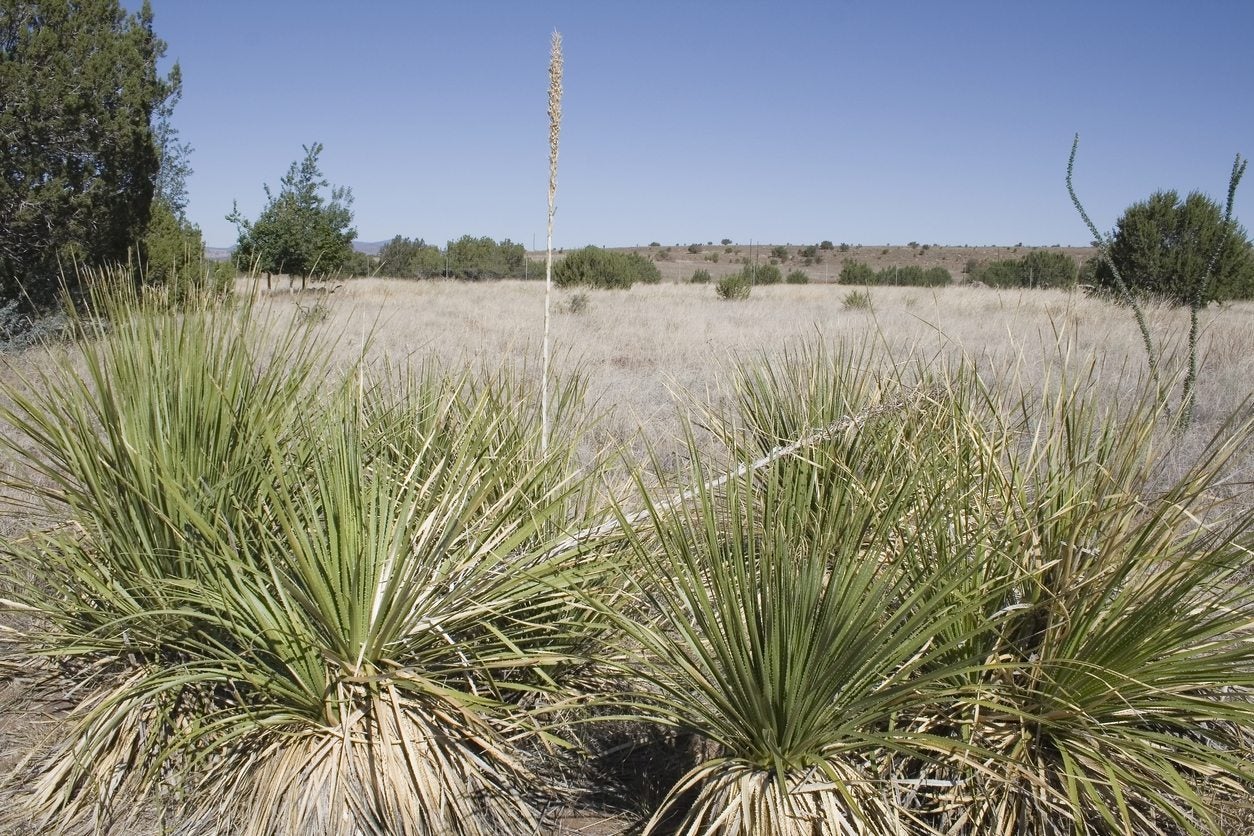Sotol Plant Information: Tips For Growing Dasylirion Plants


What is Dasylirion? Desert sotol is an architectural marvel of a plant. Its upright, sword-shaped leaves resemble a yucca, but they curve inward at the base giving them the name desert spoon. Belonging to the genus Dasylirion, the plant is native to Texas, New Mexico, and Arizona. The plant makes an excellent accent in southwestern gardens and desert landscapes. Learn how to grow sotol and enjoy this desert beauty in your garden.
Sotol Plant Information
An almost ferocious-looking plant, sotol is drought tolerant and a wild desert treasure. It has traditional uses as a fermented drink, building material, fabric, and cattle fodder. The plant can also be tamed and used to elegant effect in the garden as part of a xeriscape or desert-themed landscape. Dasylirion can grow 7 feet tall (2 m.) with a flowering spike an astounding 15 feet (4.5 m.) in height. The dark green-gray leaves are slender and adorned with sharp teeth at the edges. The foliage arches out from a central stubby trunk, giving the plant a slightly rounded appearance. The flowers are dioecious, creamy white, and very attractive to bees. Sotol plants do not flower until they are 7 to 10 years old and even when they do it is not always an annual event. Bloom period is spring to summer and the resulting fruit is a 3-winged shell. Among the interesting sotol plant information is its use as a human food. The spoon-like base of the leaf was roasted and then pounded into cakes that were eaten fresh or dried.
How to Grow Sotol
Full sun is necessary for growing Dasylirion, as well as well-draining soil. The plant is suitable for United States Department of Agriculture zones 8 through 11 and is adapted to a variety of soils, heat, and drought once established. You may try growing Dasylirion from seed but germination is spotty and erratic. Use a seed warming mat and plant soaked seed for best results. In the garden, sotol is pretty self-sufficient but supplementary water is needed in hot, dry summers. As leaves die and are replaced, they droop around the base of the plant, forming a skirt. For a tidier appearance, prune off dead leaves. The plant has few pest or disease issues, although fungal foliar diseases do occur in overly wet conditions.
Dasylirion Varieties
Dasylirion leiophyllum - One of the smaller sotol plants at only 3 feet (1 m.) tall. Greenish-yellow foliage and reddish-brown teeth. Leaves are not pointed but rather more frayed looking. Dasylirion texanum - A native of Texas. Extremely heat tolerant. May produce creamy, green blooms. Dasylirion wheeleri - The classic desert spoon with long bluish-green foliage. Dasylirion acrotriche - Green leaves, slightly more delicate than D. texanum. Dasylirion quadrangulatum - Also known as Mexican grass tree. Stiffer, less arching green leaves. Smooth edges on foliage.
Sign up for the Gardening Know How newsletter today and receive a free copy of our e-book "How to Grow Delicious Tomatoes".

Bonnie Grant is a professional landscaper with a Certification in Urban Gardening. She has been gardening and writing for 15 years. A former professional chef, she has a passion for edible landscaping.